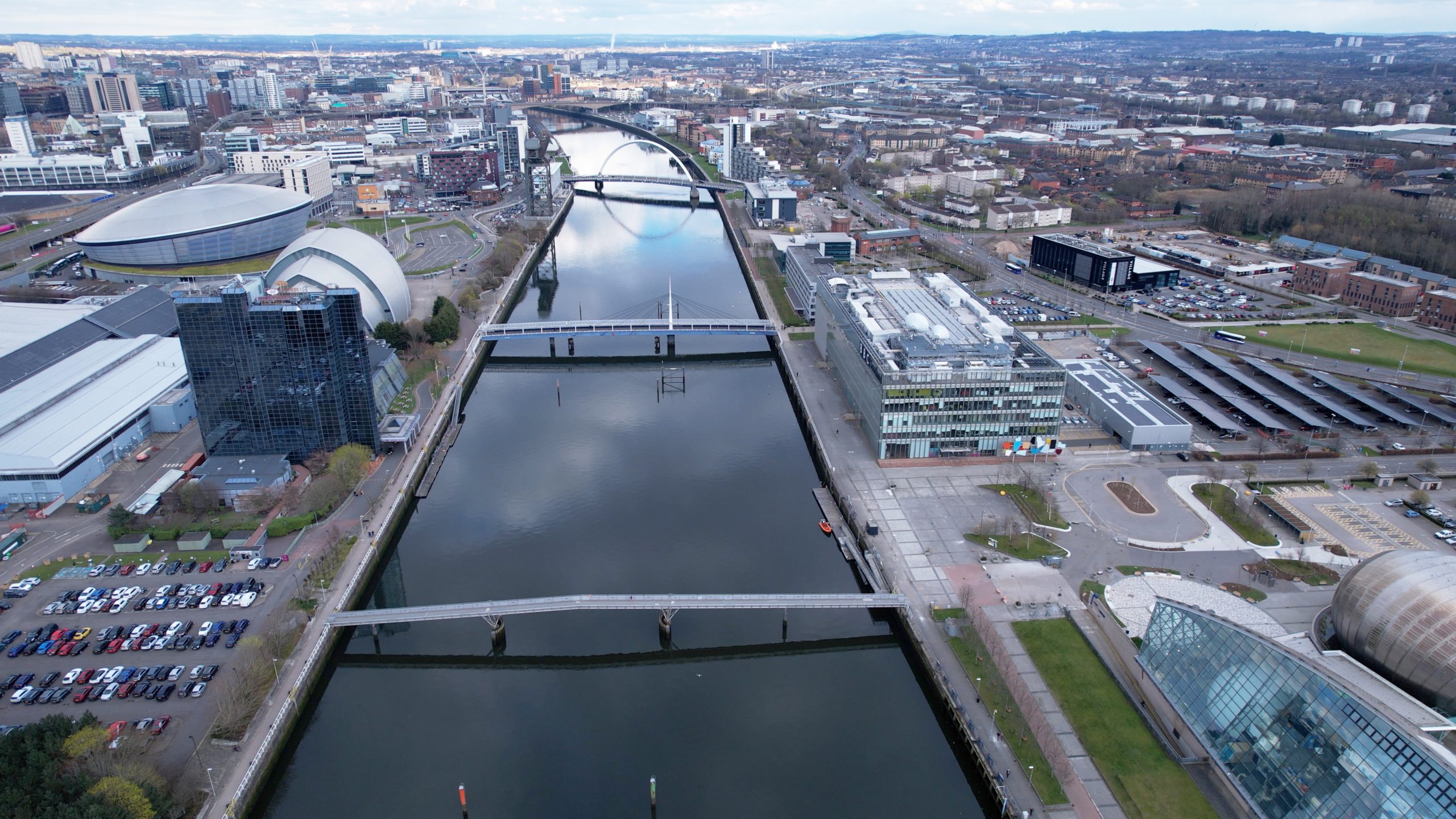
THE creation of a green freeport at the River Clyde could create up to 30,000 new jobs and attract £2.5 billion of capital investment, Glasgow City Council has said.
A formal bid has been submitted for the freeport to the Scottish and UK Governments by a partnership made up by Glasgow Airport, Peel Ports’ Clydeport, Mossend International Railfreight Park in North Lanarkshire, and the Glasgow city region councils.
The bid has already received support from key businesses and organisations based or operating within the Glasgow city region including Caterpillar, Malcolm Group, SP Energy Networks, Glasgow and Strathclyde Universities, Morrison Construction, and Loganair.
A green freeport is a large, zoned area within a defined boundary which includes a rail, sea, or airport. Operators and businesses in the zone can benefit from a package of tax and other incentives.
Glasgow City Council said that ‘key’ to the Clyde Green Freeport would be a ‘bold’ decarbonisation plan, which would ‘accelerate’ the Scottish and UK governments’ net zero ambitions.
Under the plans, the freeport would achieve net zero by 2040, with it including a new district heating system; waste to energy projects; renewable energy generation; and projects to roll out green fuel for air, rail, road, and sea transport within industries which have been dominated by carbon – including a £1 billion hydrogen plant ‘which could fuel 25% of Scotland’s HGVs.
The blueprint shows that the ‘world’s first’ climate neutral airport cluster would be created at Glasgow Airport and the nearby Advanced Manufacturing Innovation District Scotland (AMIDS) in Renfrewshire through plans for a solar park, district heating network, electric vehicle fleet, and a multi-fuel hub.
A new £44 million high capacity, decarbonised rail interchange would also be developed at Mossend in North Lanarkshire with eight 775m rail sidings served by two electric gantry cranes, electric rail shunters, cross docking facilities and associated road and rail access infrastructure. In addition, there would also be a net zero freight park consisting of 2.1 million square feet of manufacturing and logistics buildings and associated facilities.
Furthermore, the council said that the Clyde Green Freeport would see regeneration of 283 hectares of land at Mossend through £17 million of investment unlocked by tax benefits, and in the longer term, £300 million to develop the site and create infrastructure needed.
In Greenock, the deep ocean terminal would double its capacity – with more than £16 million of investment to allow a modal shift from 27,000 trucks which travel north to south annually as part of a bold port decarbonisation programme.
Kevin Rush, Clyde Green Freeport bid senior responsible officer and director of regional economic growth for the Glasgow city region, said, “Our bid is multimodal, covering air, sea and rail, and will further unlock global trade, doubling capacity to take products from across Scotland to the rest of the UK, Europe and beyond.
“It will provide an £18 billion uplift in GVA to 2034. Vitally it will tackle the region’s greatest economic challenges – increasing productivity and generating more inclusive growth. This will be achieved through fast-tracking our world-class innovation economy and creating tens of thousands of jobs in communities across the Region with high levels of deprivation. Almost 40% of Scotland’s most deprived communities are within the Clyde Green Freeport area.
“With the biggest city deal in the UK and the legacy of COP26, Glasgow city region has a proven track record of delivery. As Scotland’s economic powerhouse, with unrivalled connectivity across the UK and beyond, we have everything in place to deliver a globally successful green freeport for our region, our residents, businesses, Scotland and the UK.”








